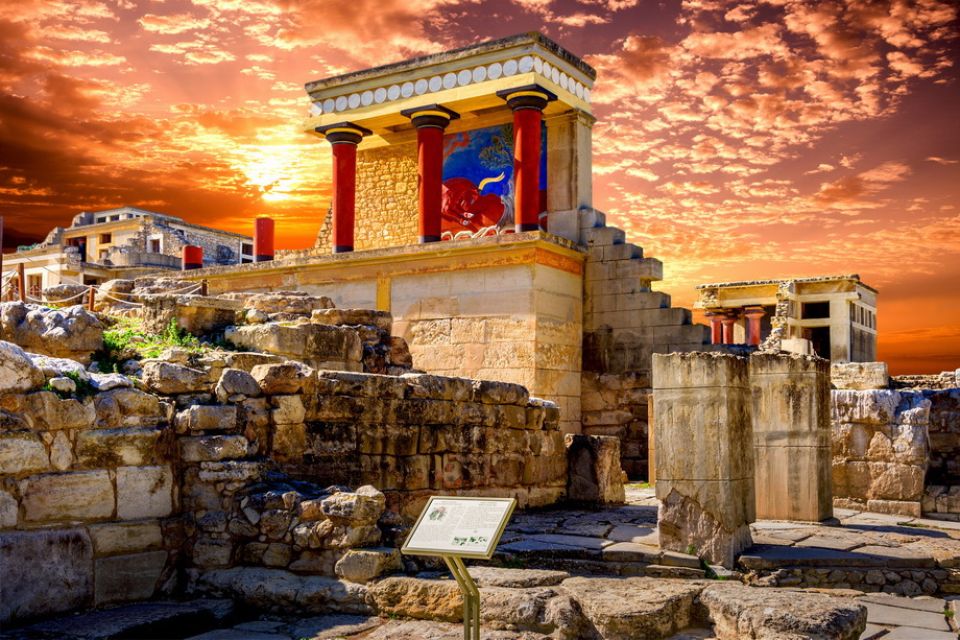Day 5: Phaistos and the Myth of Europa
The journey on the trail of the Minoan continues with your next destination: through the Messara Plain with the olive trees you reach Phaistos, the second greatest Minoan palace in history. The most important finding at the excavation site of Phaistos was the famous Phaistos Disc, a disk of fired clay now displayed in the Heraklion Archaeological Museum. The Disc has attracted the attention of archaeologists and historians, because it depicts 45 unique signs (241 tokens in total in clockwise sequence) which do not belong to any known written language in the whole world. Some compare the mysterious language to the Linear A or the Anatolian and Egyptian hieroglyphs.
After exploring the mysteries of ancient languages, you will be driven to the bay of Matala on the southern side of the island, the famous site with the man-made caves (they are thought to have been made in the Roman or early Christian times) inhabited by the hippies mainly in the 60’s. Nowadays, the place is widely known for the lively beach parties and festivals being held there every summer. However, Matala is also known – according to the Greek mythology – for the myth of Europa, daughter of the king of Phoenicia. When Zeus looked at her, he fell in love with her and was transformed into a white bull in order to approach her. As she climbed on the bull, Zeus took her away and brought her to Crete. After their love affair, Europa gave birth to his three sons Minos, Sarpedon, and Rhadamanthys, and of course gave her name to the Old Continent.
Further drive not far away from Matala to the archaeological site of Gortyn, where it is said that the wedding of Zeus and Europa took place. In Gortyn you will find the old Roman capital city of Crete. Some of its most important monuments are the Basilica of Agios Titos, the Roman Odeon and the big inscription with Gortyna’s laws that is considered to be the biggest archeological discovery of the previous century.
After such a long tour, how about a glass of high-quality Cretan wine? You will visit and enjoy wine tasting at the Vineyard Zaxarioudakis, ranked as the most beautiful in Crete and one of the most beautiful in Europe because of its beautiful scenery on the hill of Orthi Petra. The varieties cultivated there are red Kotsifali, Syrah, Cabernet Sauvignon and Merlot, besides the white varieties are Vilana, Vidiano, Malvasia di Candia, Malvasia di Candia Aromatica and Sauvignon Blanc.
http://zacharioudakis.com/
